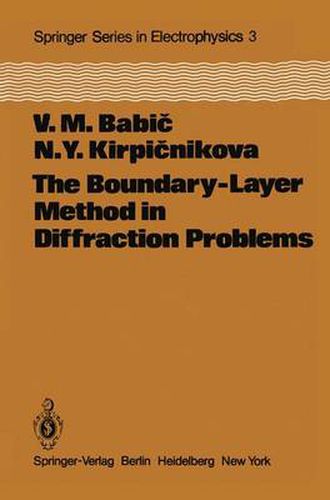Readings Newsletter
Become a Readings Member to make your shopping experience even easier.
Sign in or sign up for free!
You’re not far away from qualifying for FREE standard shipping within Australia
You’ve qualified for FREE standard shipping within Australia
The cart is loading…






This title is printed to order. This book may have been self-published. If so, we cannot guarantee the quality of the content. In the main most books will have gone through the editing process however some may not. We therefore suggest that you be aware of this before ordering this book. If in doubt check either the author or publisher’s details as we are unable to accept any returns unless they are faulty. Please contact us if you have any questions.
It has become almost a cliche to preface one’s remarks about asymptotic tech niques with the statement that only a very few special problems in diffrac tion theory (be it electromagnetic, acoustic, elastic or other phenomena) are possessed of closed form solutions, but as with many cliches, this is because it is true. One only has to scan the literature to see the large amount of effort (both human and computer) expended to solve diffraction problems involving complicated geometries which do not permit such simplifications as separation of variables, It was a desire for techniques more straightforward than frontal numerical assaults, as well as for a theory ~hich ~ould explain the basic physical phenomena involved, which stimulated research into asymptot ic methods. Geometrical optics (GO) and, now, even Keller’s geometrical theory of dif fraction (GTD) have been with us for some time, and have become standard tools in the analysis of high-frequency wave phenomena, Of course, it was always recognized that these approaches broke down in certain regions: GO in the shadow region; GTD along shadow boundaries and caustics. One remedy for these defects is to construct an expansion, based upon a more general ansatz than GO or GTD, which is made to be valid in one or more of the areas where GO or GTD break down.
$9.00 standard shipping within Australia
FREE standard shipping within Australia for orders over $100.00
Express & International shipping calculated at checkout
This title is printed to order. This book may have been self-published. If so, we cannot guarantee the quality of the content. In the main most books will have gone through the editing process however some may not. We therefore suggest that you be aware of this before ordering this book. If in doubt check either the author or publisher’s details as we are unable to accept any returns unless they are faulty. Please contact us if you have any questions.
It has become almost a cliche to preface one’s remarks about asymptotic tech niques with the statement that only a very few special problems in diffrac tion theory (be it electromagnetic, acoustic, elastic or other phenomena) are possessed of closed form solutions, but as with many cliches, this is because it is true. One only has to scan the literature to see the large amount of effort (both human and computer) expended to solve diffraction problems involving complicated geometries which do not permit such simplifications as separation of variables, It was a desire for techniques more straightforward than frontal numerical assaults, as well as for a theory ~hich ~ould explain the basic physical phenomena involved, which stimulated research into asymptot ic methods. Geometrical optics (GO) and, now, even Keller’s geometrical theory of dif fraction (GTD) have been with us for some time, and have become standard tools in the analysis of high-frequency wave phenomena, Of course, it was always recognized that these approaches broke down in certain regions: GO in the shadow region; GTD along shadow boundaries and caustics. One remedy for these defects is to construct an expansion, based upon a more general ansatz than GO or GTD, which is made to be valid in one or more of the areas where GO or GTD break down.